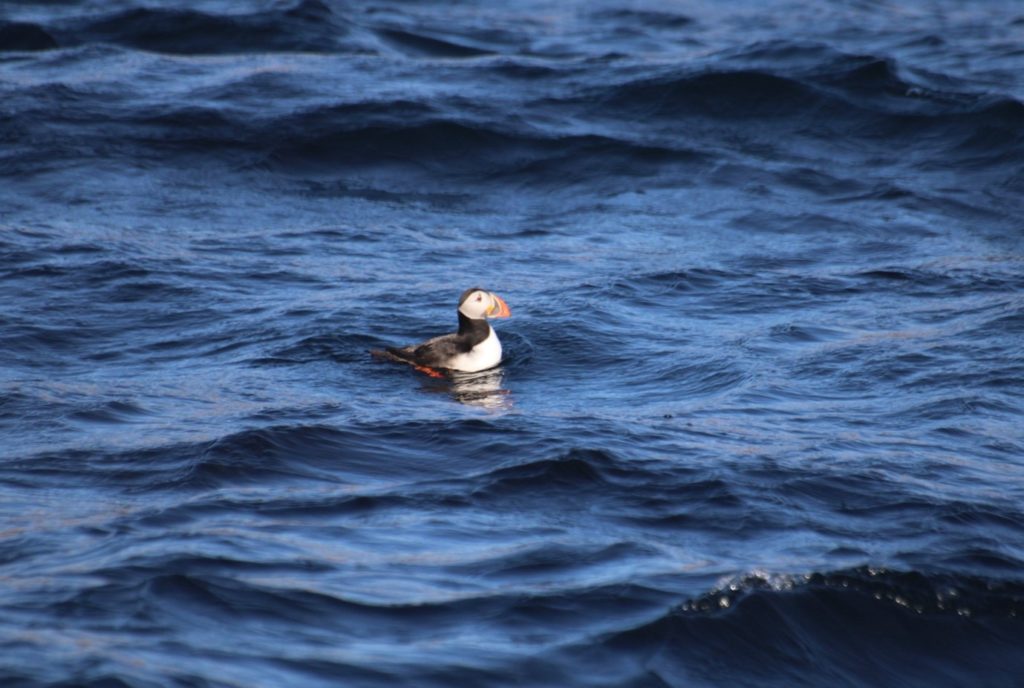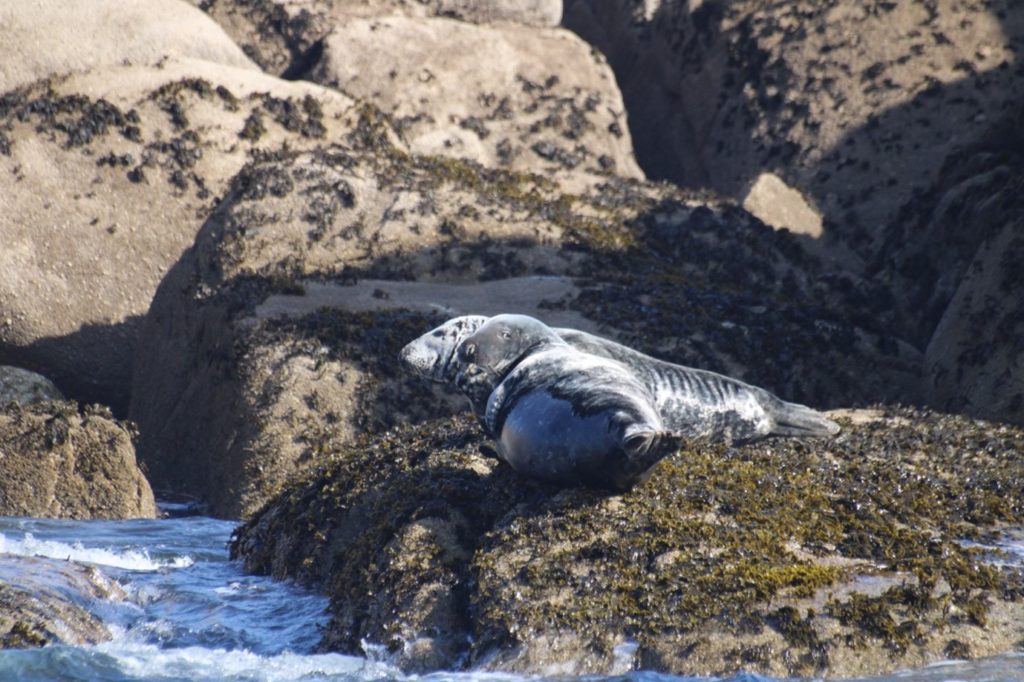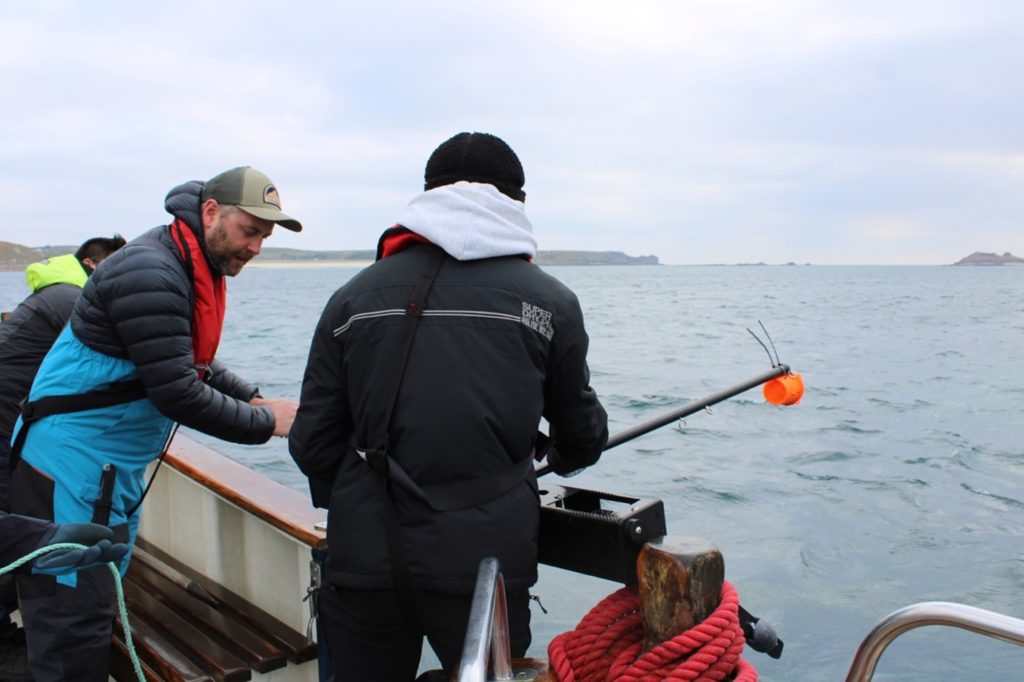Author: Ethan Hunt
In April this year, our MSc in Marine Vertebrate Ecology and Conservation cohort took part in the field course section of our Master’s. Positioned at the end of teaching, this was an opportunity to put into practice all the skills that we had learnt throughout the year in a real-world example.
Having handed in our last assignment deadlines the week before, and with many of us soon heading off around the world for our dissertation research – including South Africa, the UAE, Cyprus, and beyond – this trip fell right at the perfect moment to spend one last time as the whole cohort together before going our separate ways.
Day 1: Island Introductions
The first day started with an early coach journey to Penzance, followed by a crossing on the infamous Scillonian III ferry. Known for its turbulence, the weather was thankfully in our favour for the crossing, and as St Mary’s came into view, framed by turquoise water and white beaches, it felt almost tropical. For a moment, I wondered if we’d somehow overshot Cornwall and ended up in the Caribbean. After arriving in Hugh Town, we met Will Wagstaff, a local naturalist with encyclopaedic knowledge of the islands’ flora and fauna. He led us on a tour of St Mary’s, helping us brush up on our bird ID skills and giving us an ecological introduction to the Isles. In Penzance we’d been split into teams and given the challenge of which team could identify the most species. By the afternoon, it was crazy to see lists of over 30 species already, and we hadn’t even begun looking for marine life!
That evening, we settled into our accommodation and wrapped up the day with dinner and a pub quiz. But I have to admit, the locals decimated our Exeter teams!

Day 2: Seabirds, Conservation, and Community Action
Tuesday took us to St Agnes with John Peacock from St Agnes Boating and Vickie Heaney, a seabird ecologist with the Isles of Scilly Wildlife Trust. Vickie introduced us to the St Agnes Seabird Recovery Project; a ground-breaking, community-led rat eradication programme designed to protect burrow-nesting seabirds.
We learned about the logistical and ecological challenges of implementing such a project on a remote island, and how vital community buy-in was to its long-term success. It was genuinely inspiring to see science and local knowledge working in harmony, and deeply satisfying when puffins flew past our boat on the return to St Mary’s, just after hearing how their populations are beginning to recover thanks to efforts like this.
Later, we walked around the island, pausing to listen for the ghostly calls of the Manx shearwater. These seabirds nest in burrows and famously ‘scream’ back in response to recordings of their own calls.
Back in Hugh Town, some of us braved a sea swim (which was a lot colder than it looked) while others took some time to explore more of the island. We wrapped up the day with another pub dinner; something of a running theme on this trip, but I wasn’t complaining!

Day 3: Wildlife Highlights and BRUV Preparation
On Wednesday, we were back on the water with Joe Pender from St Mary’s Boating, heading out toward the southernmost lighthouse in the British Isles. Alongside more puffin sightings we spotted a harbour porpoise and several hauled-out grey seals, an amazing day for marine mammal sightings.
Back on St Mary’s, Owen Exeter gave a fantastic talk on Baited Remote Underwater Videos (BRUVs), explaining how they work and how we’d be using them later in the week.
We then broke into teams to consider potential research studies that could use BRUVs to measure abundance around the islands. Teams got incredibly creative; some came up with citizen science through phone apps, others suggested using eDNA for detecting cryptic species.
Day three also marked my third pub chocolate brownie in a row, and I was loving life!

Day 4: Fieldwork at Sea and a Competitive Streak
Thursday was our most hands-on day. We spent the day on the Sapphire with Joe and Ricky Pender from the Isles of Scilly Inshore Fisheries and Conservation Authority (IFCA). Our groups took turns deploying BRUVs and collecting data on crabs that we caught in baited cages: measuring carapace length, weight, species, and checking for signs of black spot disease.
Back on land, each group presented their findings, outlining species richness and abundance recorded in both the crab pots and on the BRUV footage. Despite only deploying three BRUVs, our group’s footage alone captured small-spotted catsharks, nursehounds, ballan wrasse, and more.
That evening, we returned to the pub for a final quiz, this one written by our lecturers. Each round was led by a different lecturer, some heavily marine-themed, others a little more random. This evening brought out some incredible competitiveness, especially during the knot-tying round, when somehow the winner managed to tie the final knot behind her back before her opponent even got to the end of the rope. Sorry 2nd place, 1st place really did show you how it’s done!

Day 5: A Bittersweet Farewell
Friday gave us some free time to explore. Some climbed up to Star Castle, others walked along the coastal paths, and a few decided another sea swim was needed: I wasn’t so sure. We regrouped for the ferry, this time feeling more like a group of researchers than students, and began the journey home. Once again, the crossing back was in our favour, with clear skies and calm seas, and before we knew it we were back in Falmouth!

Final Thoughts
This field course gave us the chance to reconnect with why we chose to study marine science in the first place. It offered a glimpse into real-world conservation and monitoring, introduced us to experts and community members passionate about protecting their environment, and gave context to all that we have learnt this past year.
A huge thank you to Dr Kristian Metcalfe, for leading the trip, as well as Dr Annette Broderick, Dr Molly Kressler, Owen Exeter, and Vance Mak for joining the trip. Thanks also to Will Wagstaff, Joe and Ricky Pender, John Peacock, and Vickie Heaney for sharing their knowledge and making the experience so memorable.
Our cutting edge marine research facilitates a wide range of undergraduate and postgraduate degree programmes. Find out more about these programmes here.

